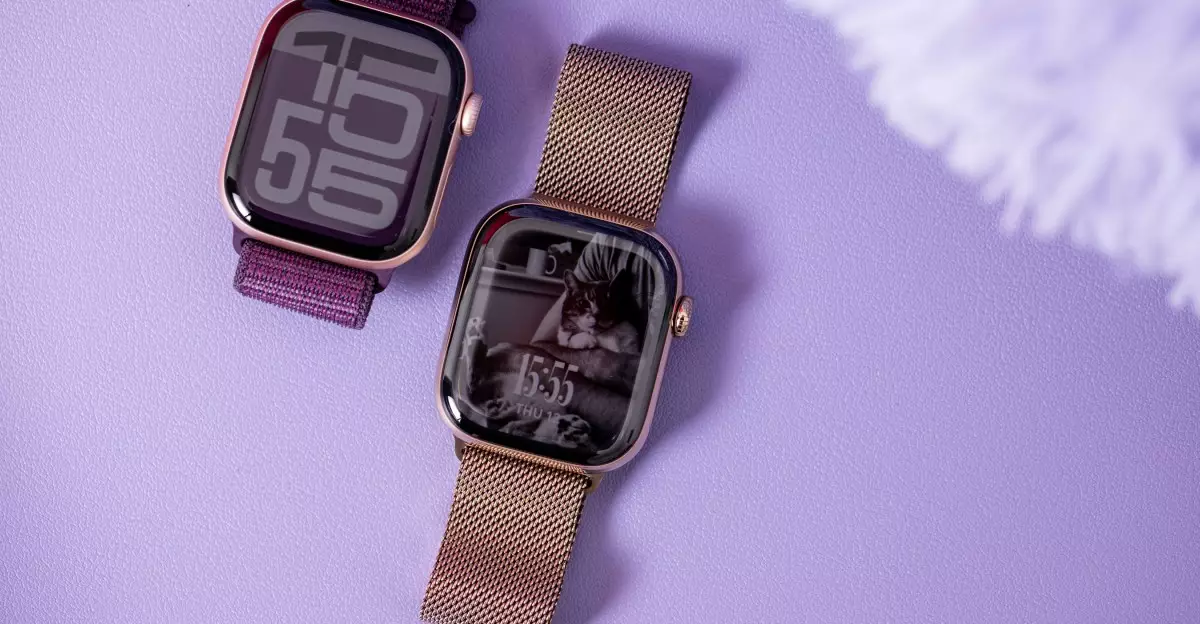Apple Inc. has built its reputation on innovation, consistently pushing the boundaries of what technology can achieve. According to insights from Bloomberg’s Mark Gurman, this ethos is set to evolve dramatically over the next few years as the company gears up to introduce a lineup of camera-equipped wearables by 2027. This strategic move signals Apple’s intention to merge augmented capabilities with its existing product lines, a shift that could redefine user interaction within wearables such as the Apple Watch and AirPods.
Transforming the Apple Watch with Visual Intelligence
One of the most intriguing developments cited by Gurman is the potential integration of cameras directly into the Apple Watch. Expected enhancements include hidden cameras within the display for standard models and visible sensors on the Apple Watch Ultra’s side. This integration serves a vital purpose: leveraging AI to enable advanced functionalities that allow the device to “see” its surroundings. Imagine a smartwatch not only tracking your health but also providing real-time information on events or nearby amenities, transforming it into a personal assistant that goes beyond notifications and fitness tracking.
The introduction of Visual Intelligence marks a significant leap from the traditional scope of wearables. This technology, which debuted with the iPhone 16, enables features like calendar integration from scanned event flyers and instant restaurant reviews. Apple’s ambition to transition from utilizing third-party AI models to developing in-house capabilities indicates a commitment to crafting a more sophisticated ecosystem tailored specifically for its devices. This move could set Apple apart in an increasingly crowded market of smart wearables.
Networking Across Devices with AI
Furthermore, this AI initiative is not limited to the Apple Watch. The rumored release of camera-equipped AirPods expands the potential of Apple’s wearables, allowing users to access Visual Intelligence capabilities seamlessly across devices. For instance, users could enjoy features such as audio descriptions of visual contexts, enriching conversations in cafes or social gatherings. The implication of this cross-device functionality strengthens Apple’s interconnected ecosystem, emphasizing a unified user experience that is both intuitive and powerful.
The Role of VisionOS and Leadership
Behind these innovations lies the strategic vision of leaders like Mike Rockwell, who now directs the development of advanced AI models and software like visionOS. His proven track record with Apple’s ambitious Vision Pro project lends credibility to the future of these wearables. While the market may anticipate short-term results, Rockwell’s leadership is pivotal in ensuring that Apple’s long-term vision aligns with its commitment to high-quality, user-centric technologies.
As we look toward 2027, the anticipated advancements in AI not only promise to enhance existing functionalities but could also pave the way for groundbreaking products, such as AR glasses. Although many of these innovations are still in their infancy, Apple’s strategic initiatives signal a profound shift in how we interact with technology daily. The prospect of AI-driven wearables fundamentally transforming our experiences merits both excitement and scrutiny as consumers navigate this evolving tech landscape.

